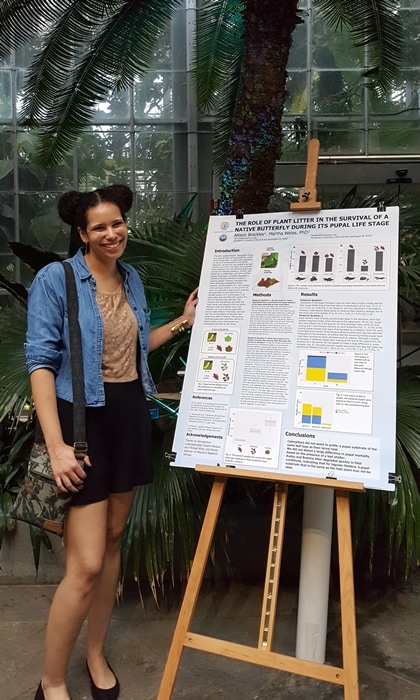Alli presents poster on Silver Spotted Skipper pupal behavior at the Smithsonian Botanical Symposium6/7/2017 The abstract for the project is below:
The Role of Plant Litter in the Survival of a Native Butterfly during its Pupal Life Stage Dead canopy tree leaves may seem of little interest to a legume-feeding caterpillar. However, such leaves are readily used by legume-feeding Epargyreus clarus caterpillars just prior to pupation, when they construct leaf shelters for themselves, presumably for protection during the vulnerable pupal stage. This study documents the use of host and non-host litter in shelter construction during laboratory trials, as well as the influence of shelters on pupal mortality in overwintering habitats. Although previous work has shown that E. clarus larvae develop a feeding preference for host plants they have previously fed upon, they do not show this same preference when choosing dead leaves for pupal shelters. Laboratory trials show that non-host Quercus alba leaf litter was as attractive as familiar host plant leaves. To determine the effectiveness of leaf shelters as refuges, sheltered and unsheltered pupae were placed along transects in a temperate deciduous forest in early December, 2016. Preliminary results from this ongoing experiment indicate that both groups of pupae are equally susceptible to predation. By describing the use of leaf litter by E. clarus, this project highlights one of the ubiquitous but rarely-quantified interactions between an insect and a non-host plant. Although non-host leaves are unacceptable for caterpillar feeding, they may provide more durable shelters than E. clarus host leaves.
0 Comments
Your comment will be posted after it is approved.
Leave a Reply. |

 RSS Feed
RSS Feed
